Light, Rotation, Life, Gravity And Time
Thumbnails Of Paintings On This Page With Theories Following Each Work
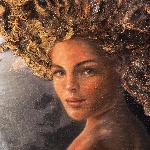
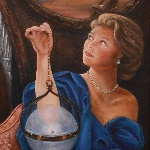
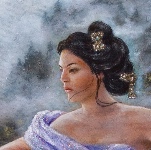
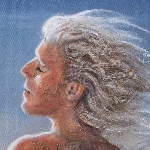
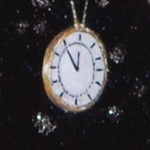
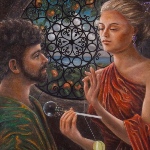
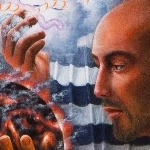

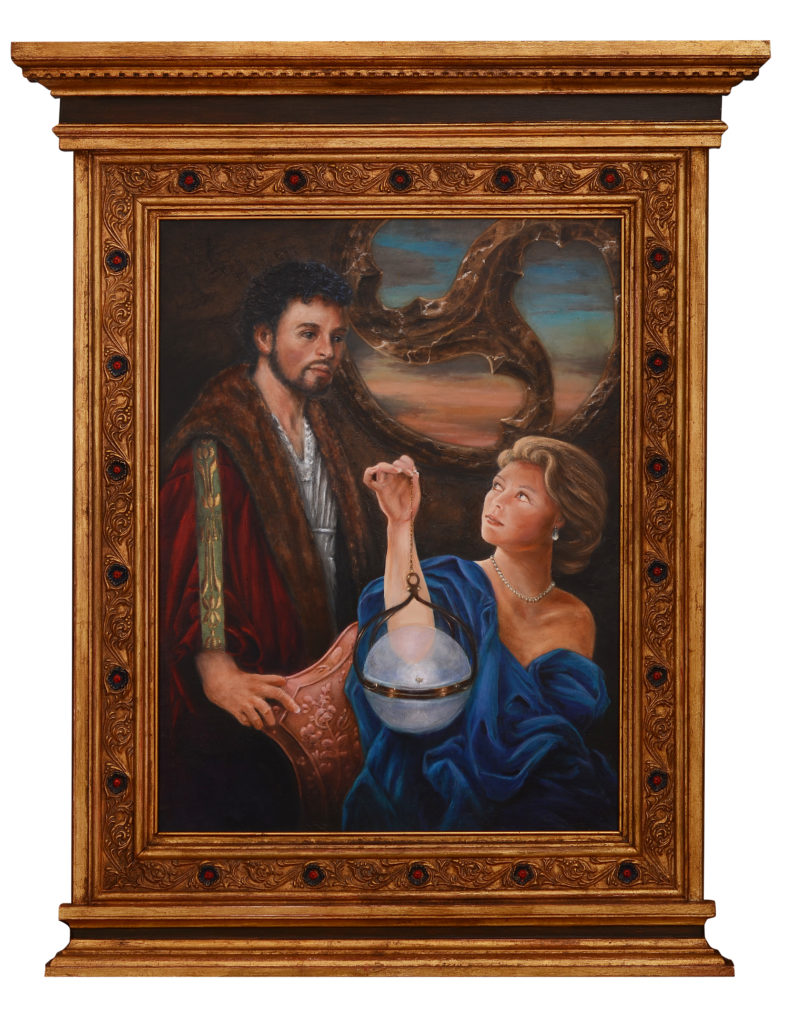
Starlight and Stardust
The Painting's Subject
In this painting, Olé Romer and his wife, Anne Marie Bartholin, discuss the theory that light has a finite speed. In this painting, Olé Romer and his wife, Anne Marie Bartholin, are depicted discussing the theory that light has a finite speed. Olé observed the varying timings of Jupiter’s moon eclipses and used the differences to approximate the speed of light. He concluded that light, indeed, has a finite speed. Subsequent refinements and corrections by other scientists established the speed of light that we use today. However, Olé and the scientists that followed made a fundamental error by assuming that space was a vacuum when, in reality, it is not. It is impossible to create a vacuum on Earth. Even in the vast distances in space between galaxies, a vacuum does not exist. There is always dust, gases, and matter .
Detail Of the Painting


The painting shows an imaginary conversation about Light between Olé Romer and his wife, Anne Marie Bartholin. Anne Marie is holding a glittering spark of light in a glass vacuum bottle.
Olé Romer A Court Scientist
Olé was the court scientist for Louis XIV in the 1670s. He was studying Jupiter’s moons. Thereupon he noticed that when Jupiter’s elliptical orbit made it more distant from Earth, it took Light longer from Jupiter’s moons to Earth. Until this time, Light was believed instantaneous. However, his only possible conclusion was that light had a speed. With this in mind, Olé calculated the speed of light to within 20% of what is accepted today. However, Olé believed “space” was a vacuum. He was in error.
Space Is Not A Vacuum
The proposition that light has a fixed rate of speed in a vacuum has hindered the understanding of light. It is a misconception that outer “space” is a vacuum. Nevertheless, interplanetary “space” particles have a low density, approximately five particles per cubic centimeter around Earth. However, the density decreases with the distance from the Sun. “In certain regions of outer “space,” the temperature is about 3 K, and there are approximately 5 × 106 molecules per cubic meter,” 5atoms/cm3. (From Univers Today, Space and Astronomy News.)
Light Has Different Speeds
The light’s speed is transmitted depending on the material it contacts and passes through. In addition, even temperature affects light’s transmission rate. For example:
-Light’s passage through air at 0 °C and 1 atm pressure is about 299704644.53915 metres per second.
– It passes through water at 20°C: about 224900568.64216053 meters per second
– Through fused silica glass at room temperature, its speed is 205618969.82167354 metres per second.
– Its speed through pyrex glass at room temperature: 203940447.6190476 metres per second
– Its passage through acrylic glass at room temperature: between 200933282.84182307 and 201202991.94630873 metres per second.
Light changes speed because of the difference in “resistance” or friction it encounters.
It passes like a chain reaction of energy through these materials.
So “space” is not empty, and Light may take over 4.2 years from the closest star to reach Earth and 13.2 billion light-years from the farthest star. These inter-stellar and inter-galactic regions have less density than areas within our solar system, but light would still encounter significant material in its passage. In summary, the rate of lights transmission (its speed) correlates to the material it passes through.
Matter Can deflect light.
Light undergoes a fascinating transformation through different densities of matter—it changes direction, gets deflected, or even reflects. This dynamic behavior of light is a captivating aspect of its interaction with the world around us.
Light speed is not a fixed constant but a variable that changes with the material it encounters. The commonly known velocity of light, 186,282 miles per second(299792458 km per second), is a specific value applicable only to certain parts of the solar system.
It’s the interaction with matter that makes light visible. When light contacts the surface of a molecule, it becomes perceptible. However, the molecule can either reflect or emit light, adding to the complexity of light’s behavior.
Different materials can deflect light’s path, unlike Newton’s Cradle steel balls, which transmit power in a straight line. Thus, pool shots would be a more realistic representation of light’s passage and its changes in direction.
There is also the premise that light travels or moves. If it were possible to create a vacuum, light would instantly fill the void. This would only be apparent when light contacts the walls of the container. Because light can only be seen when it comes in contact with matter, there is a misunderstanding that light is also a particle.
Comparing Light With Sound
Light and sound both excite or cause molecules to vibrate as they pass from molecule to molecule. It does not pass through a vacuum. Light instantaneously fills a vacuum and excites the molecules it contacts. Depending on the molecule, light is either reflected or transmitted through the molecule. The molecule can emit or absorb light. Sound passes from one molecule to another. However, the sound never moves. Light passes similarly. However, a vacuum does not block light. Light’s energy is stored when matter does not emit the exact value of light as it receives.
Newton's Cradle
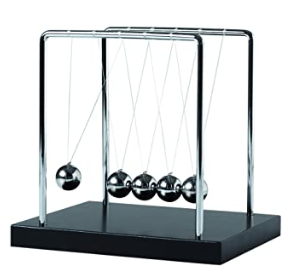
Summary and Conclusions:
-Light is instantaneous in a vacuum.
_ Matter makes light apparent. It can slow light’s passage, stop it, change its direction, deflect it, or reflect it
.-In classical wave-optics theory, light behaves like matter when it passes through adjacent pinholes, causing a moiré pattern to appear. This pattern is due not to light acting like matter but to the molecules in the air affecting light’s trajectory.
Similarly, an object’s position will change when there is a change in density in the material in light’s passage. An example is a drinking straw that goes from air to water in a glass, and the straw seems bent. The same effect with a less sudden shift happens to light from distant stars that pass close to the Sun. This movement is not because of the Sun’s gravity affecting light rays, as Einstein believed. Instead, the star’s position changes because of different densities in space and the atmosphere near the Sun.
Calculating distances in the outer solar system, between stars, and in intergalactic space presents significant challenges. These distances are notably greater than current estimates, highlighting the complexity of astronomical distance calculations.
Calculating distances within the Milky Way and far distant galaxies involves parallax and cepheid variable stars. However, these methods face difficulties due to the complex motion of the solar system. Earth’s orbit is not a perfect ellipse or circle, and the solar system is not stationary. The planets orbit the Sun in a spiral when viewed from outside the solar system, and the Sun travels about 2,261,600,000 miles* in the six months between observations. Additionally, the stars in the Milky Way move at different speeds, with those at the ends of the galaxy’s arms moving faster than those near the center. The Milky Way galaxy itself moves about 5,720,000,000 miles* through space in those six months. These complex motions significantly complicate distance calculations
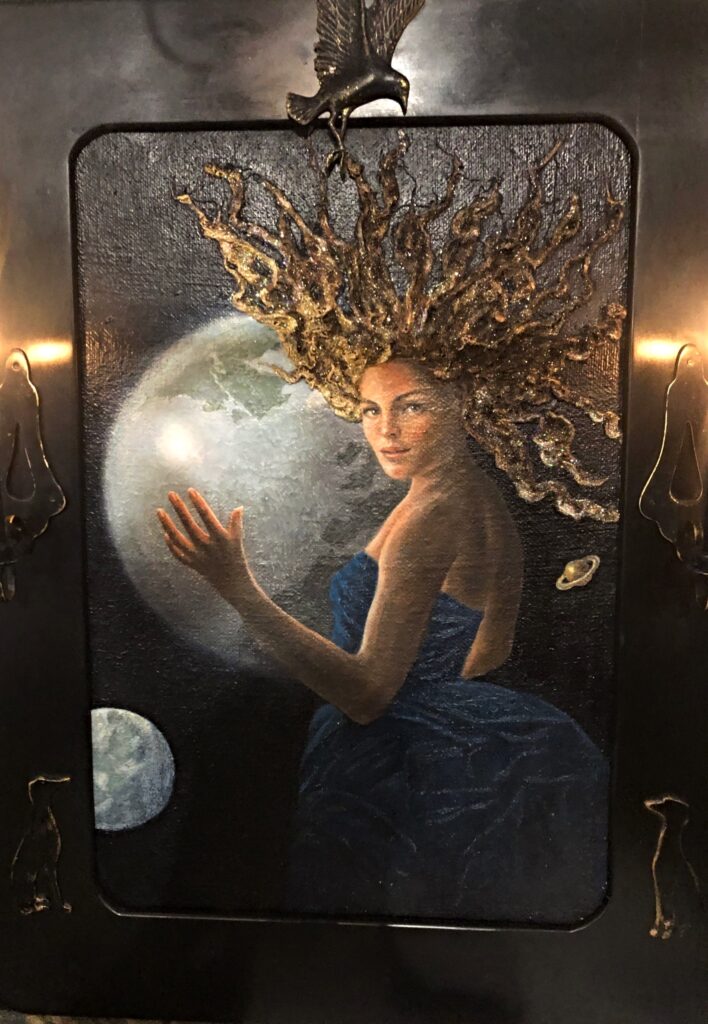
The Gravity Of Catherine Van de Graaff As Hecate
Description Of The Painting
The painting depicts the goddess Hecate, who rules the Earth, sea, and sky. She guards borders, crossroads, and in-between spaces and is associated with uncovering secrets and magic. The painting’s frame includes symbols such as candelabras to represent the torch Hecate carries, and it also features the cuckoo and black dogs, which are traditionally associated with her.
Gravity Ia A Problem For Science
The current theory about gravity suggests that since the Big Bang 13.8 billion years ago, matter from this expansion has coalesced into planets, stars, and asteroids due to its gravitational attraction. However, according to the National Center for Science Education, the current theory of gravity is considered flawed, with a significant weakness in understanding gravity in the universe. So please be careful reading the definitions since they do not make sense and are contradictory.
Earth has gravity. Humans presume solid matter is the source of gravity. Unfortunately, the Earth is only half of the equation. Science’s mistake is forgetting the role of the atmosphere and not seeing its importance.
Catherine's Husband And Static Electricity
Catherine’s husband, Robert J. Van de Graaff, a physicist who taught at Princeton and MIT, invented the Van de Graaff generator, which produces static electricity. The generator attracts materials to stick to it. His research gives a new perspective and understanding of static electricity.
A Little Background Of Hecate and Catherine
Statue Of Liberity

The name Catherine may come from the Greek “Aikaterine,” pronounced almost as “Hakaterine,” and has possibly derived from the Greek goddess Hecate. Additionally, she is known to wear a seven-rayed crown (statue of Liberty). At the same time, her power was to rule over the Earth, sea, and sky. She had a universal role as Savior, Mother of Angels, and cosmic world. Also known as the goddess of crossroads and boundaries, her shrines were where people needed guidance. Likewise, she was a goddess of the dark. Black represents her role as nightwalker and leader of spirits for emotional healing. Her two black dogs typically accompany her. Finally, she is the torchbearer who lights the way through the darkest times, guiding us back to her cave for rebirth. Although she is associated with witchcraft today, she was one of the house gods in ancient Greece.
It was Catherine’s name that inspired the use of Hecate as the subject of the painting. Hecate’s rays radiate out like a static charge. Hecate’s lighting of the darkness and being at boundaries or crossroads fits with the importance of the boundaries of the atmosphere.
Hecate
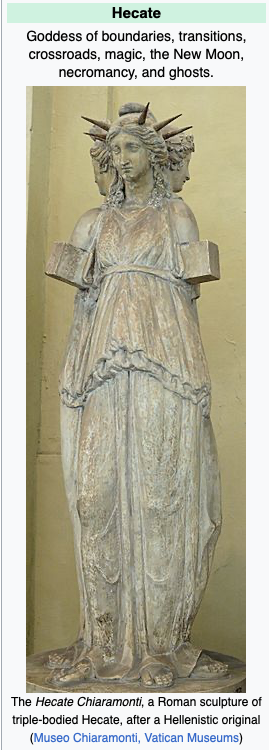
Static at Play
Aura of Earth
Closeup of Painting
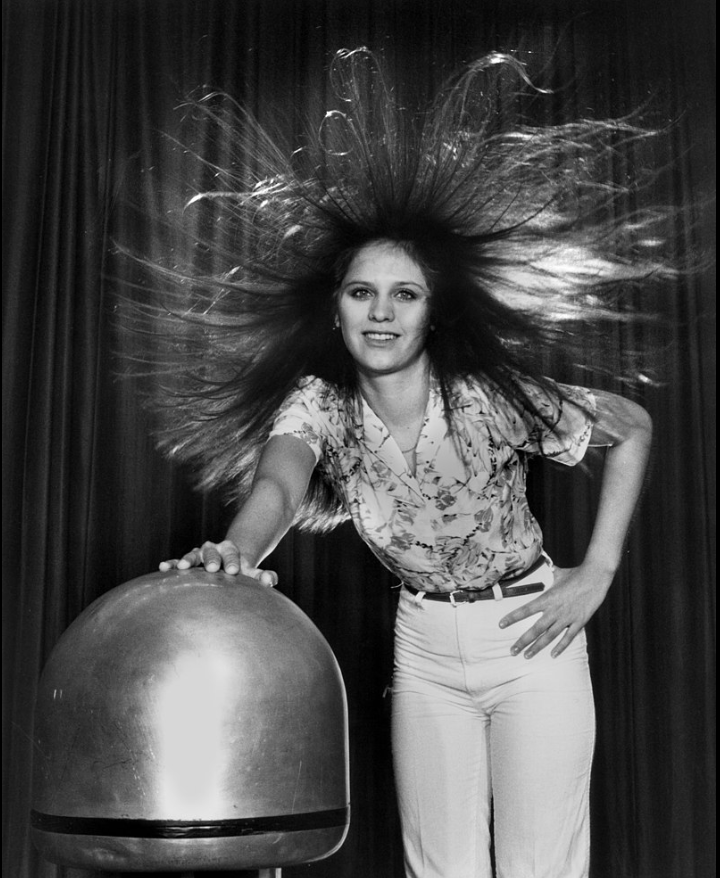
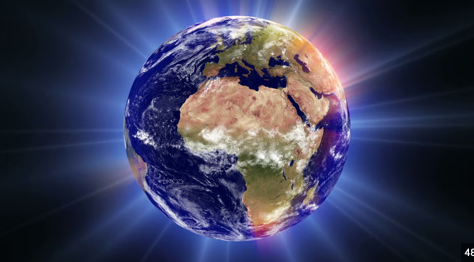
An Aura of Light Enveloping the Earth.

Robert J Van de Graaff and his colleague Nicholas Burke at Princeton University developed the first Van de Graaff Generator.
After observing the Van de Graaff generator and considering the Earth’s ionosphere as a source of enormous quantities of static electricity, I realized that this static stored in the ionosphere might give rise to gravity. The rays of light visible in the Earth’s Aura are caused by dust and matter in the atmosphere, like the girl’s hair, which shows the presence of electricity. This potential connection between the Van de Graaff Generator and gravity is a fascinating hypothesis that could lead to significant breakthroughs in our understanding of gravity. Planets with low gravity levels may retain traces of once much more powerful gravity, which may have dissipated as their atmosphere disappeared into space.
The Atmosphere, The Key To Understanding Gravity
Add Your Heading Text Here
The atmosphere has distinct layers; the troposphere, the stratosphere, the mesosphere, the ionosphere, the thermosphere, and the exosphere. Each layer has different features. For example, the troposphere is humid and makes most of our weather. The stratosphere stops most ultraviolet rays from hitting the Earth and is dry the higher it is from Earth. The ionosphere, which includes the mesosphere, the thermosphere, and the exosphere, is the part of the atmosphere that creates gravity.
The ionosphere replicates the smooth, dry surface of a giant Van de Graaff generator. The rapid air movements create a constant charge and cause all materials to be pulled toward the Earth just as a Van de Graaff does on a much-diminished scale. As a result, the Earth is continually creating static electrical energy.
The stratosphere and troposphere are essential because they separate and insulate the Earth from the ionosphere. As a result, the opposite static charge passes to the Earth by induction. A similar process to charging a wireless cellphone or electric toothbrush.
In the future, a lot of space travel could compromise the insolation between the troposphere and the ionosphere. If a conductive pathway opens between the two layers, the flow of positive and negative ions could temporarily weaken or destroy gravity on Earth.
For the moon and other planets with little or no atmosphere, their gravity is a vestigial holdover from when the planets had an atmosphere. Their static charge is dissipating slowly because space around these planets is void of material, atoms, and dust that could absorb and transmit the planet’s charge.
Aeoius
Oil on canvas 24″x 24″ Aeolus, the Greek god, was known as the keeper of the winds, who held the secret of gravity. Aeolus’s winds create gravity by turning the Earth into a giant Van de Graaff generator.
Detail Of Painting
Detail Of Frame



The Mystery Of Gravity
Science is on a quest to unlock the secrets of gravity. It is believed that the Earth’s immense physical matter attracts and holds other matter to its surface. This fundamental principle of matter attracting matter forms the basis of the concept of gravity, resulting in the constant pull of objects towards the Earth. Galileo’s research has proven that the size of an object does not affect the strength of this gravitational attraction. Thus, gravity is caused by a distinct form of attraction, and the study of static electricity could offer valuable insights.
Static Electricity
Static electricity is an imbalance between negative and positive charges in objects or substances. This imbalance happens between the Earth and specific layers of the atmosphere due to the movement of the different atmospheric layers, which create static electricity charges between the Earth and specific layers of its atmosphere. In a way, the Earth acts like a giant Van de Graaff generator, where dry winds in the upper atmosphere create enough static charge to keep any matter attached to the Earth.
The smoothness and dryness of a Van de Graaff generator are extremely important. If the Earth were reduced in scale, it would be as smooth as a stainless steel ball, and that does not include the atmosphere, which is flatter and dryer than any location on Earth.
In stark contrast to the Earth, planets such as the Moon, which have little or no atmosphere, cannot build up a charge. They can hold onto a charge they once had for eons due to the lack of an easy way to discharge their electrical imbalance. The space around the Moon and other dry, low-atmosphere planets has an extremely low density and provides very slow dissipation of their accumulated charge.
This ability to keep charges and thus gravity for billions of years is because their electrical charges only slowly leak away as are picked up by the rarefied matter in space. The lower levels of the atmosphere on Earth create static electricity as well, but it is too humid to store the imbalance . The electrical storms in the lower atmosphere give the impression that the atmosphere and Earth always move toward equilibrium. Including the upper atmosphere destroys its balance. The result of this imbalance is gravity.
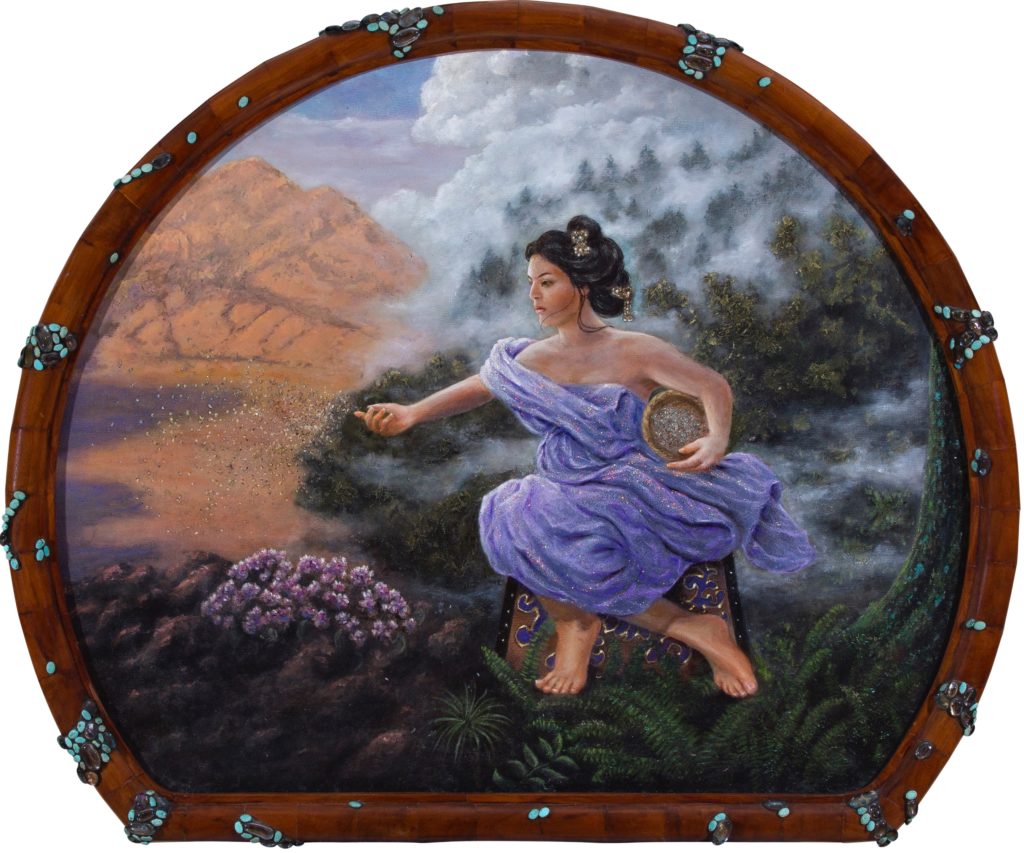
Seeding The Earth
In this painting, Gaia (Nüwa in Chinese) represents Asia. In Asian mythology and ancient European thought, Gaia was omnipresent. Life’s presence was considered a pillar of the universe, much like matter and energy. The painting shows Gaia transforming the landscape from barren desolation to a lush paradise. Science, considered today’s religion, sees Gaia or Life as an accident that arose spontaneously on Earth.
Detail Of The Painting
Detail Of The Frame
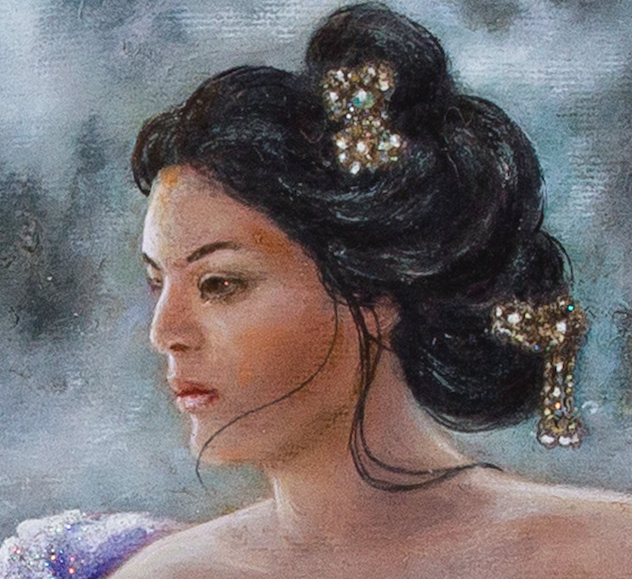

The walnut veneer frame, accented with glass and turquoise beads, resembles a Chinese “moon gate,” the Asian symbol of birth and renewal. Like the moon, it connects to other planets and worlds, making it a perfect complement for Gaia.
Gaia's Powers
Gaia’s extraordinary life powers extend across the universe, and she is the subject of profound fascination. These powers enable life to remain dormant as a shadow in a hostile environment or to blossom into complex life under favorable conditions. While it may appear as a dormant virus in space, life has thrived using the available resources on Earth. The potential for life in other worlds and the different resources may result in life surpassing our wildest imaginations.
We are just beginning to understand Gaia’s powers. For example, in an article by Douglas Fox (“Microbes in the Air,” Discover April 2012), he explains that microbes, rather than inorganic minerals, are the most significant cause of Earth’s precipitation and weather. Other scientific findings reveal that Gaia substantially impacts the inorganic world and is responsible for much of the chemical makeup of the Earth’s crust.
Our Limitations
We are more blind to Gaia’s existence than the ancients. How can we understand that all creatures, plants, animals, bacteria, and viruses fit into niches in the kingdom of Life? Yet, simultaneously, we see our existence as separate and without a greater purpose.
Our Nitch
Humankind fits into the niches we have not seen or understood. Indeed, our purpose is more than a hedonistic existence or magnanimous gestures of saving rare or endangered species. We have the opportunity to preserve life’s complex network from the next cataclysmic event that will nearly destroy life, as has happened repeatedly. We may need a version of Noah’s Ark to save Earth’s complexity. So rather than life almost starting over as it did in the past great dyings, we may have to take life on a holiday from Earth and protect some of its complexity. We may never reach the stars, but a biosphere on the moon may be the answer until the Earth is again livable. We see with a limited perspective. How much has Gaia done in taking a hostile world and turning it into what the Earth is today? We may also have the opportunity to give the universe more diversity, even turning it into a garden of abundance.
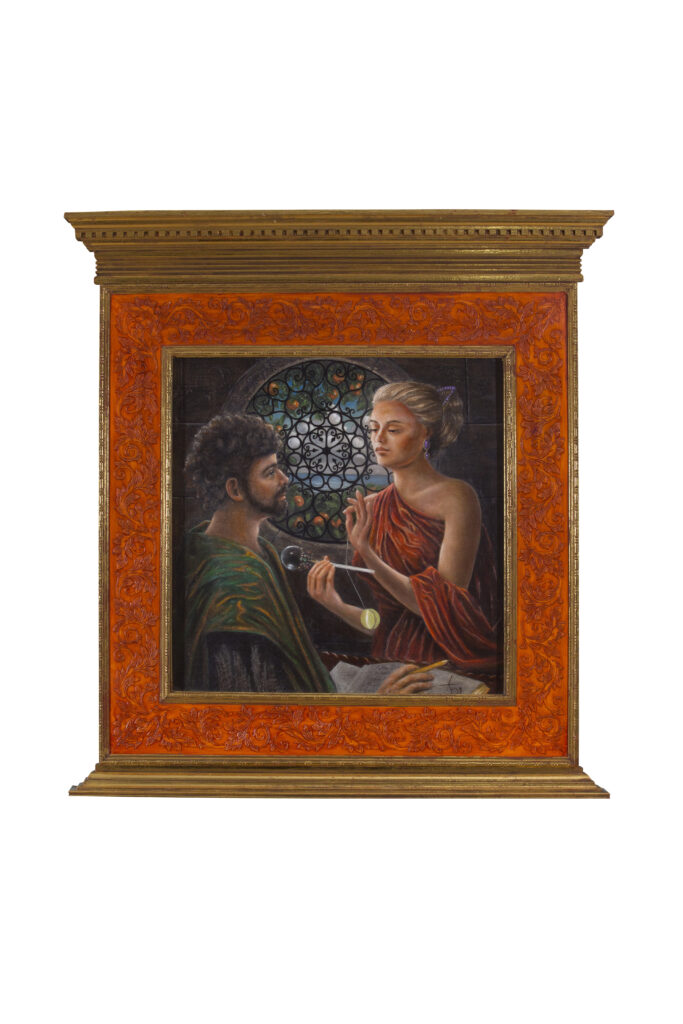
Spinning for Newton/Rotational Motion
Detail of Painting
Description Of Painting
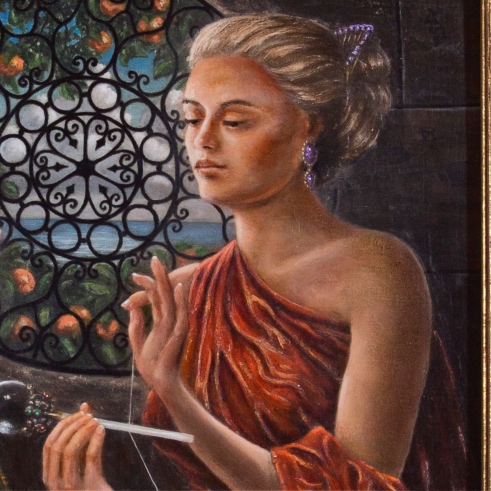
Detail Of Frame
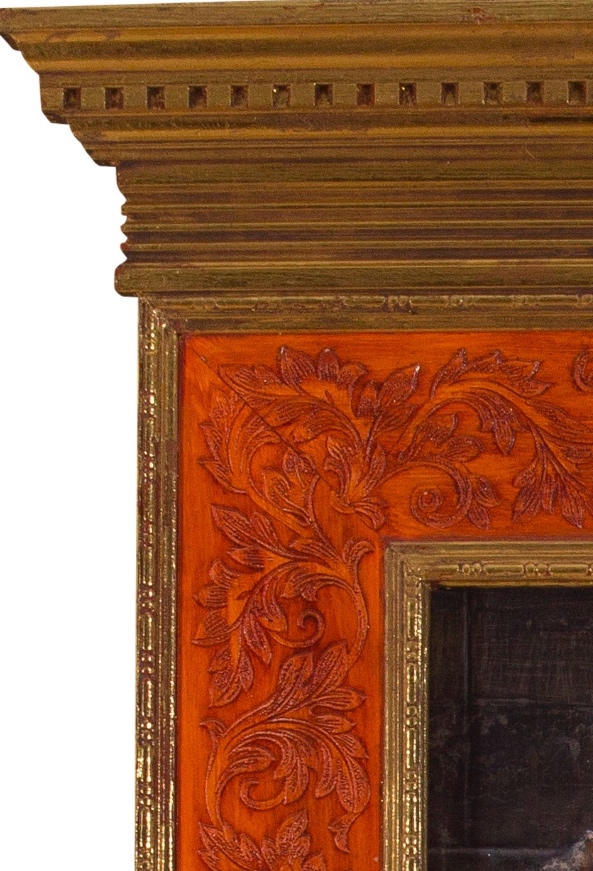
The painting vividly captures the profound intellectual exchange between the Marquis Floret-Claude du Chatelet (Gabrielle Emilie le Tonnelier de Breteuil, also known as Emilie du Chatelet) and the young Francois Marie Arouet (Voltaire). They are deeply engrossed in a discussion about a hypothetical lost theory on the circular motion of planets by Sir Isaac Newton. The painting, reminiscent of the frontispiece of their translation of Newton’s work into French, portrays Emilie du Chatelet as profoundly absorbed in Voltaire’s insightful thoughts, a testament to their intellectual prowess.
Voltaire’s connection to Newton goes beyond mere admiration. He not only attended Newton’s funeral but also had the opportunity to discuss his theories with Newton’s daughter. Had Newton ventured further into the realms of logic and the universe, he might have uncovered the reasons behind the planets’ spinning and revolving around the Sun, and why the Sun orbits the Milky Way. His potential exploration could have led to a visionary understanding of the magnetic or gravitational pull of these celestial bodies and their interactions. Newton’s insights could have inspired a new wave of scientific discovery, revealing that gravity causes matter to change direction and sometimes results in an orbital path for one or both objects.
When gravity affects or catches a passing particle, the particle starts to rotate. This rotational movement occurs because the farther side of the captured object moves faster than the side closest to the larger mass when changing direction. This difference in speed leads to the rotational spin of both objects. The impact on the larger body might be minimal.

Time
The painting for Time is in process and will be on line as soon as it will be completed/
The passage of time doesn’t change the fact that now is always constant. Like the definition of a point in geometry, it now has no dimension and also is instantaneous. This creates a dilemma – how can we plan for the future when now has no dimension? Even simple things like moving your finger require the past, present, and future. But it is always now. The only solution indicates that there must be a dimension where our thoughts and ideas in the present can influence the future.
Aristotle once argued that time is the most mysterious of all unknown things. He described time as a curious and elusive subject, and our understanding of time remains limited today.
Currently, time refers to an arbitrary measurement. While time itself is constant, the unit measurement can change or be adjusted. For instance, the length of each day, hour, and minute increases as the Earth’s rotation slows. Time is more than measurement. Most importantly, time is constant. It is always now, and that fact complicates our understanding of it. The lack of a precise word for the continuous instantaneous present makes discussing time difficult. We need a word comparable to a point in geometry that signifies position without dimension for the ‘instant Now.’ The word “Punct,” derived from the Latin punctum for point, has been introduced here. Punct is defined as a constant with no dimension, highlighting this overlooked aspect of time.
‘Punct’ is a concept and a constant and omnipresent reality in the universe. It is the same everywhere, meaning that time only truly exists in the present. This challenges our standard conception of time as merely an arbitrary measurement of the past or the future. The concept of ‘Punct’ presents a dilemma: if time is always ‘the present, ‘ how can movement occur? This challenges our understanding of time and existence. ‘Punct’ having no dimension implies that the decision to take an action and the action itself happen simultaneously, not in sequence as we perceive it. This simultaneous nature of action and decision, seemingly impossible in our physical and energy planes, suggests a different plane of existence for life. The intersection of these planes challenges our understanding of time and existence.
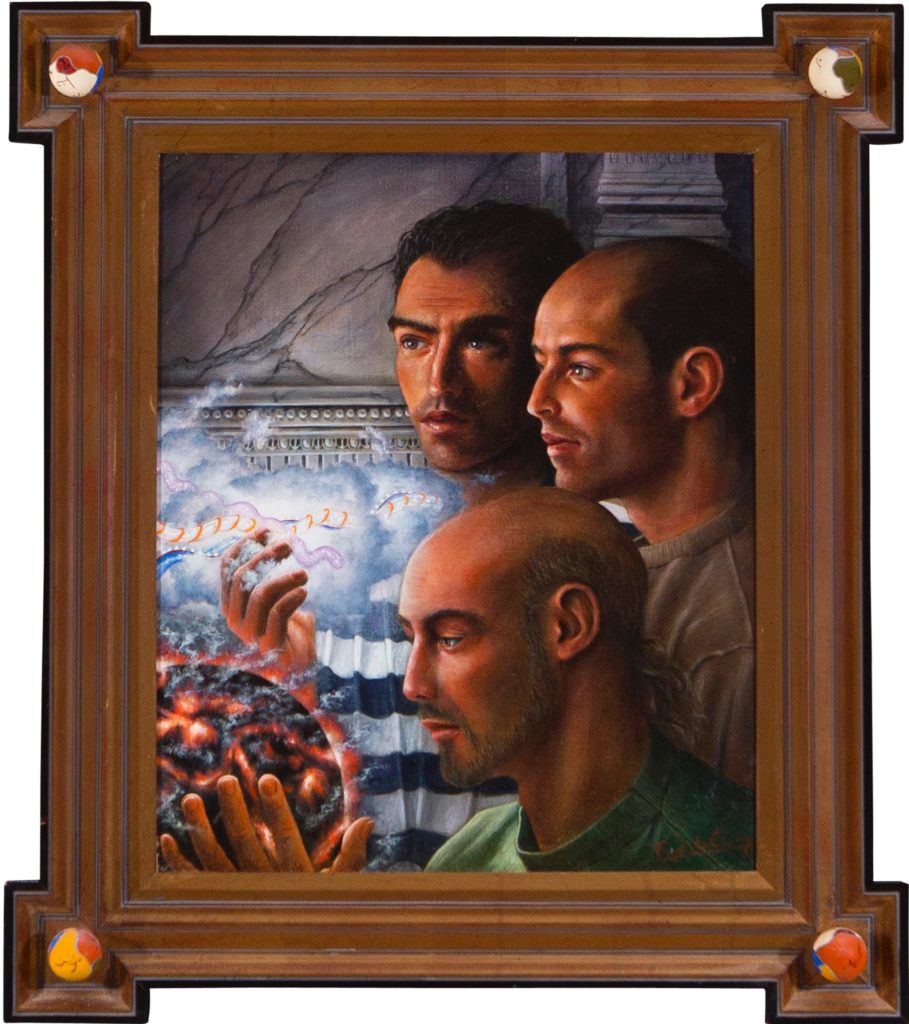
The Three Professors
Description Of Painting
Description Of Frame
The painting depicts three professors, one holding a model of ancient Earth and one holding rays representing light and energy. The third professor is standing as an observer.
The artwork features a frame with a globe on each corner depicting the same geological point as “Titans Pi,” at a point in Earth’s history where the continents were submerged beneath the waves. The symbols adorning the globes at the corners of the frame denote the different continents in Pitman shorthand.
Detail Of Painting
Detail Of Frame
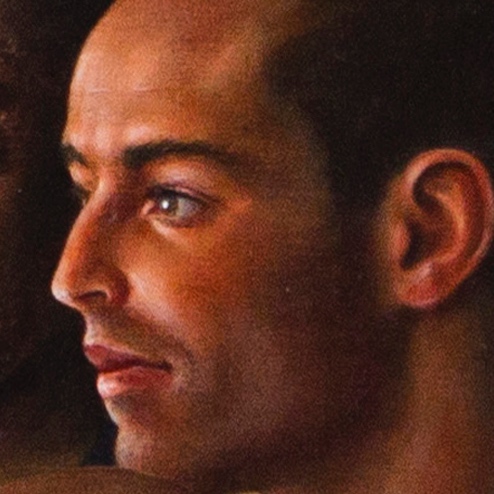
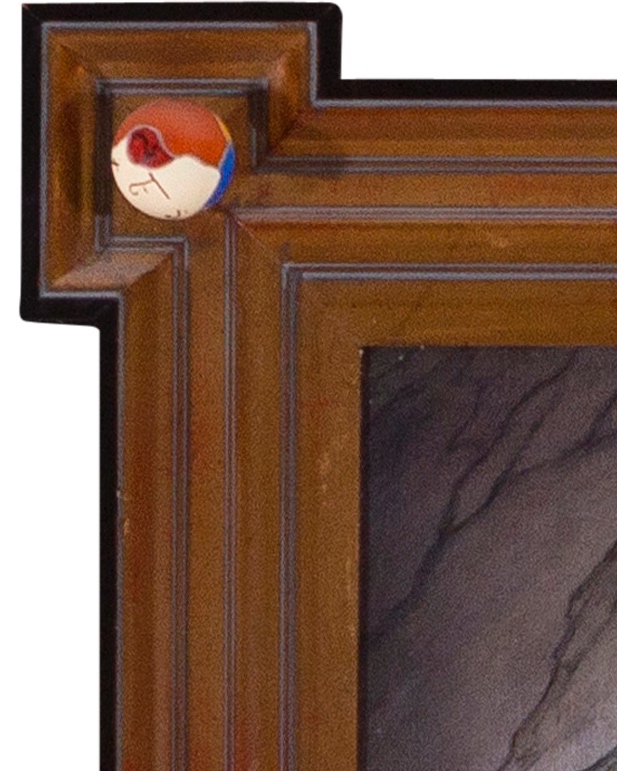
The Problem With Science
Isaac Asimov once described America as having a “cult of ignorance,” which he believed was a persistent presence. He noted that anti-intellectualism has been a constant thread winding through our political and cultural life, nurtured by the false notion that democracy means that my ignorance is just as good as your knowledge. Our universities need help with this weakness, believing any information they possess is law. It’s time to challenge this belief. Professors and educators should not dogmatically adhere to accepted theories but should encourage students to question and explore alternative ideas. Distinguishing between technological and scientific progress becomes imperative. While technological marvels such as computers, AI, and pharmaceuticals have made notable strides, some of the most groundbreaking progress has stemmed from outside the conventional paradigm.
Yet, the shackles of conventional wisdom have stifled and hindered the true potential of ‘Science.’Theories are treated as gospel facts. It’s time for a shift. The unthinking acceptance of fundamental theories and laws has significantly hampered progress, constraining the dynamism and evolution essential to scientific disciplines. We must re-evaluate our approach to scientific education and research and embrace open-mindedness towards alternative ideas. This is the key to unlocking the true potential of science.
